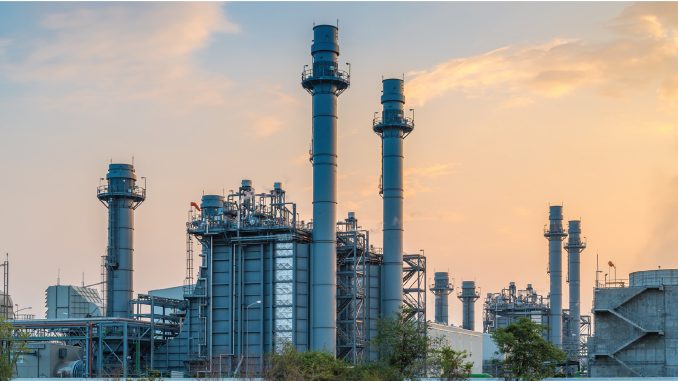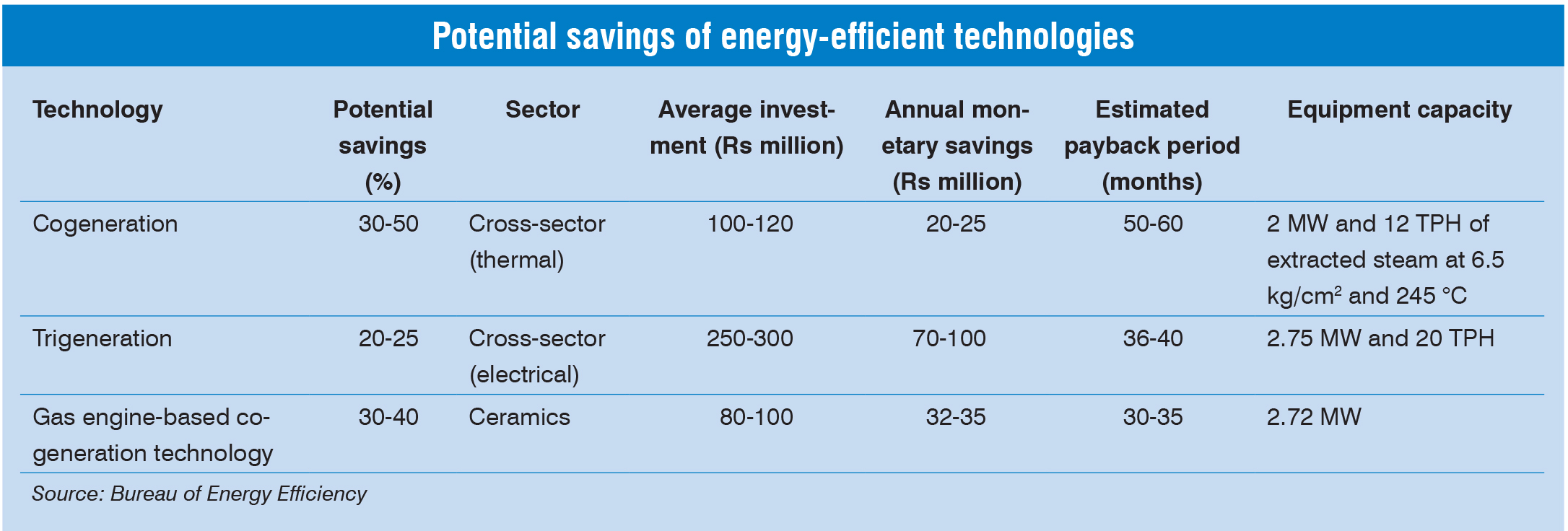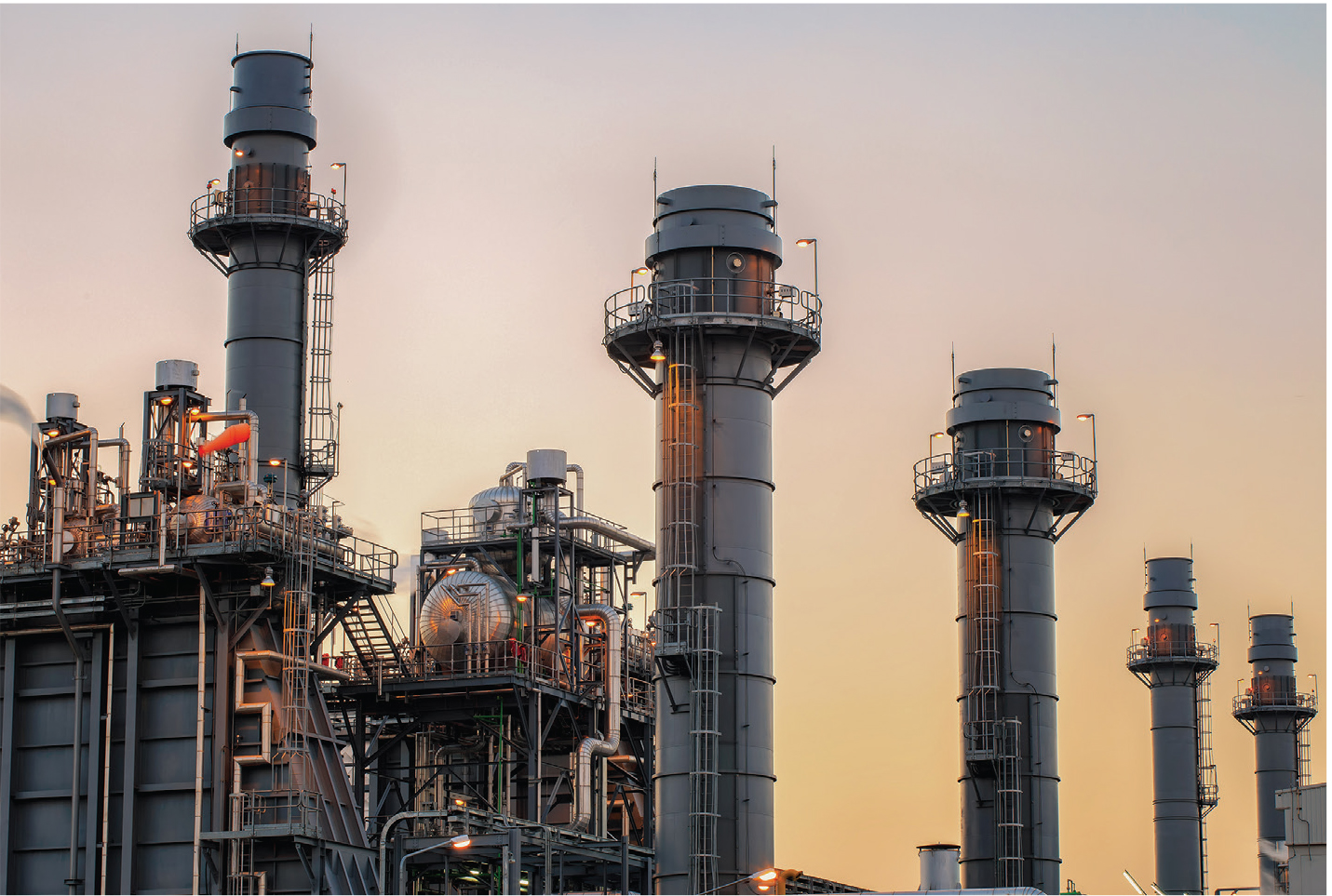
Thermal power plants (TPPs) are major contributors to India’s electricity supply. However, the conventional method of power generation and delivery exhibits considerable inefficiency, with only a third of the primary energy input translating into usable electricity for consumers. Within conventional plants, efficiency hovers at a mere 35 per cent, with the remaining 65 per cent of energy dissipating as waste. This loss primarily occurs through heat rejection to surrounding mediums like water or air due to inherent limitations in the thermodynamic cycles employed. Further losses of about 10-15 per cent arise during electricity transmission and distribution across the grid. Compounded by escalating energy demand and fuel costs, there is an urgent need to explore new energy resources or enhance existing systems. Multi-generation solutions such as cogeneration and trigeneration have emerged as viable options for improving energy generation efficiency and simultaneously addressing various reliability, safety and flexibility concerns.
Moreover, the Ministry of New and Renewable Energy (MNRE) notified the National Bioenergy Programme in November 2022. The programme will comprise sub schemes, namely, the Waste to Energy Programme to support the setting up of large biogas, bio-compressed natural gas, and power plants; the biomass programme to support the setting up of pellets and briquettes for use in power generation and non-bagasse-based power generation projects; and the biogas programme to support the establishment of family and medium-sized units biogas in rural areas.
Cogeneration
Cogeneration, also known as combined heat and power (CHP) production, involves the simultaneous generation of electricity and useful heat using a heat engine or power station. This integrated energy production method efficiently meets both heat and power demands from a single fuel source. By capturing heat that would typically be wasted during power generation, such as through cooling towers or flue gas, cogeneration fulfils process heat requirements. This not only reduces the need for additional fuel sources but also results in substantial fuel savings and pollution reductions. Consequently, cogeneration stands as a thermodynamically efficient utilisation of fuel. The reclaimed heat finds applications in heating processes like supplying hot water for district heating and domestic use. Beyond minimising energy waste and greenhouse gas emissions, CHP systems yield significant cost benefits by eliminating the need for separate heating systems. By harnessing waste heat through CHP, industrial facilities can significantly reduce electricity consumption, leading to cost savings.
In addition, they operate more sustainably by efficiently utilising waste heat, thereby fulfilling their environmental responsibility.
Recognising the significant potential and role of biomass energy within the Indian context, the MNRE has launched numerous initiatives to promote efficient technologies across various sectors, aiming to maximise benefits derived from biomass utilisation.
Among these initiatives, particular emphasis has been placed on bagasse-based cogeneration in sugar mills and biomass power generation under the Biomass Power and Cogeneration Programme. This initiative primarily aims to foster the adoption of technologies that optimise the utilisation of the country’s biomass resources for grid power generation.
As of January 31, 2024, the total installed capacity in the biomass power and cogeneration sector stands at 10,789.66 MW, comprising 584.05 MW of waste-to-power and 10,205.61 MW of biomass cogeneration capacity, encompassing both bagasse and non-bagasse sources.
India is also creating a viable market for bioproducts like biomass pellets and briquettes. The country hosts approximately 230 biomass pellet manufacturers and around 1,030 briquette manufacturers across various states. These products are supplied to power plants and industries. Additionally, the government has established a national mission on the use of biomass in TPPs under the Ministry of Power. This initiative aims to address air pollution caused by farm stubble burning and reduce the carbon footprint of thermal power generation.
In November 2022, the MNRE announced that it would continue with the National Bioenergy Programme for energy recovery until 2025-26. The programme has been recommended for implementation in two phases, with a total budget outlay of Rs 17.15 billion, of which Rs 8.58 billion has been allocated for Phase I.
Cogeneration technologies that have gained widespread commercial adoption encompass extraction/back pressure steam turbines, gas turbines with heat recovery boilers (with or without bottoming steam turbines), and reciprocating engines with heat recovery boilers. Among steam turbines, the two most prevalent types are backpressure and extraction turbines. An alternative configuration is the extraction-back pressure turbine, suitable for applications requiring thermal energy at two distinct temperature levels. Full-condensing steam turbines are typically integrated into facilities where process heat can be utilised to generate power. One notable advantage of steam turbines is their flexibility in utilising various conventional and alternative fuels such as coal, natural gas, fuel oil and biomass. These systems exhibit high power generation efficiency, particularly for electricity demands over 1 MW up to several hundred MW. However, their operation may not be ideal for sites with intermittent energy demand due to system inertia.
Gas turbine cogeneration systems offer the flexibility to meet either the entirety or a portion of a site’s energy needs, with the potential to recover high temperature exhaust stack energy for various heating and cooling purposes. While natural gas is the predominant fuel choice, alternatives such as light fuel oil or diesel are also viable options. Gas turbines typically range in capacity from a fraction of MW to approximately 100 MW. In recent years, there have been significant advancements in gas turbine cogeneration, driven by increased natural gas availability, technological advancements, reduced installation costs and improved environmental performance. Additionally, project development gestation periods have become shorter, and equipment can now be delivered modularly. Gas turbines boast quick start-up times and offer the flexibility of intermittent operation. Despite a relatively lower heat-to-power conversion efficiency, they excel in recovering more heat at higher temperatures. In instances where the heat output falls short of user requirements, supplementary natural gas firing can be employed by mixing additional fuel with the oxygen-rich exhaust gas, enhancing thermal output efficiency.
Reciprocating engine cogeneration systems, also referred to as internal combustion engines, have high power generation efficiencies. These systems capitalise on two heat sources for recovery: high temperature exhaust gas and the engine jacket cooling water system at lower temperatures. Due to their effectiveness in heat recovery, reciprocating engine systems are particularly favoured by smaller energy consuming facilities, especially in those with a greater demand for electricity than thermal energy and where heat quality requirements are modest, such as for low pressure steam or hot water. These engines excel in intermittent operation and exhibit less sensitivity to ambient temperature fluctuations compared to gas turbines. While initial investment costs are relatively low, operating and maintenance expenses can be substantial due to heightened wear and tear.
 Trigeneration
Trigeneration
Trigeneration, also known as combined cooling, heating, and power (CCHP) or combined heating, refrigeration and power, is a technology that concurrently delivers three forms of output energy: electrical power, heating and cooling. These systems integrate CHP or cogeneration systems with a thermally driven refrigeration system to provide cooling alongside electrical power and heating. CHP systems typically consist of a power system, which can be an internal combustion engine fuelled by fossil fuels or biofuels, an external combustion engine, or other thermally or chemically driven systems connected to a generator that produces electricity. Heat recovery systems capture heat from the power system and exhaust gases for heating applications. To optimise CHP systems, it is essential to maximise the utilisation of both electrical power and heat. In instances of seasonal variations in heat demand, the efficiency of CHP systems can be enhanced by utilising excess heat to power thermally driven refrigeration technologies. Trigeneration systems can achieve overall efficiencies as high as 90 per cent, a significant improvement over the 33-35 per cent efficiency typically observed in electricity generated in central power plants.
Trigeneration offers a multitude of advantages, making it an increasingly attractive option to meet energy demands. Among its benefits are significant cost savings, as it efficiently utilises resources for power, cooling and heating simultaneously. This approach is not only economical but also environmentally friendly, reducing overall electricity consumption and emissions. Moreover, it serves as a buffer against fluctuations in electricity costs, providing stability and predictability. With high operating efficiency, trigeneration ensures reliable and uninterrupted power supply, along with quality cooling and heating services. Its independence from grid power availability or captive power plants further enhances its reliability and resilience, making it a compelling choice for sustainable energy solutions.
According to Energy Efficiency Services Limited, trigeneration has the potential to reduce an end user’s primary energy demand by 60-70 per cent, enhance overall energy efficiency by nearly 75 per cent, and decrease greenhouse gas emissions by up to 30 per cent. A trigeneration system can deliver 300 tonnes of refrigeration for each MW of power it generates, saving approximately 195 kW of electricity and eliminating the need for investments in centralised cooling equipment and hot water boilers. Moreover, by establishing an alternative source of electricity through captive generation, trigeneration can shield consumers from escalating tariffs. As per the International Energy Agency’s Energy Policy Review Report, the potential of trigeneration technology in India’s energy landscape is projected to escalate to 30 GW in the coming years. Realising this potential will necessitate an investment of Rs 9 trillion across the building and industrial sectors, resulting in an annual emission reduction of 32.2 million tonnes.
 Challenges and the way forward
Challenges and the way forward
One constraint associated with these systems is their suitability for locations requiring simultaneous heating, cooling and power. Despite the energy cost reductions offered by cogeneration, some systems entail substantial installation expenses. For businesses considering smaller-scale installations, securing the necessary capital can prove challenging. In summary, leveraging cogeneration and trigeneration solutions can maximise overall energy efficiency, serving as a transformative tool in achieving sustainable objectives for a cleaner environment. These solutions minimise energy wastage and optimise consumption, generating at least two outputs with a single energy input point.
Akanksha Chandrakar
